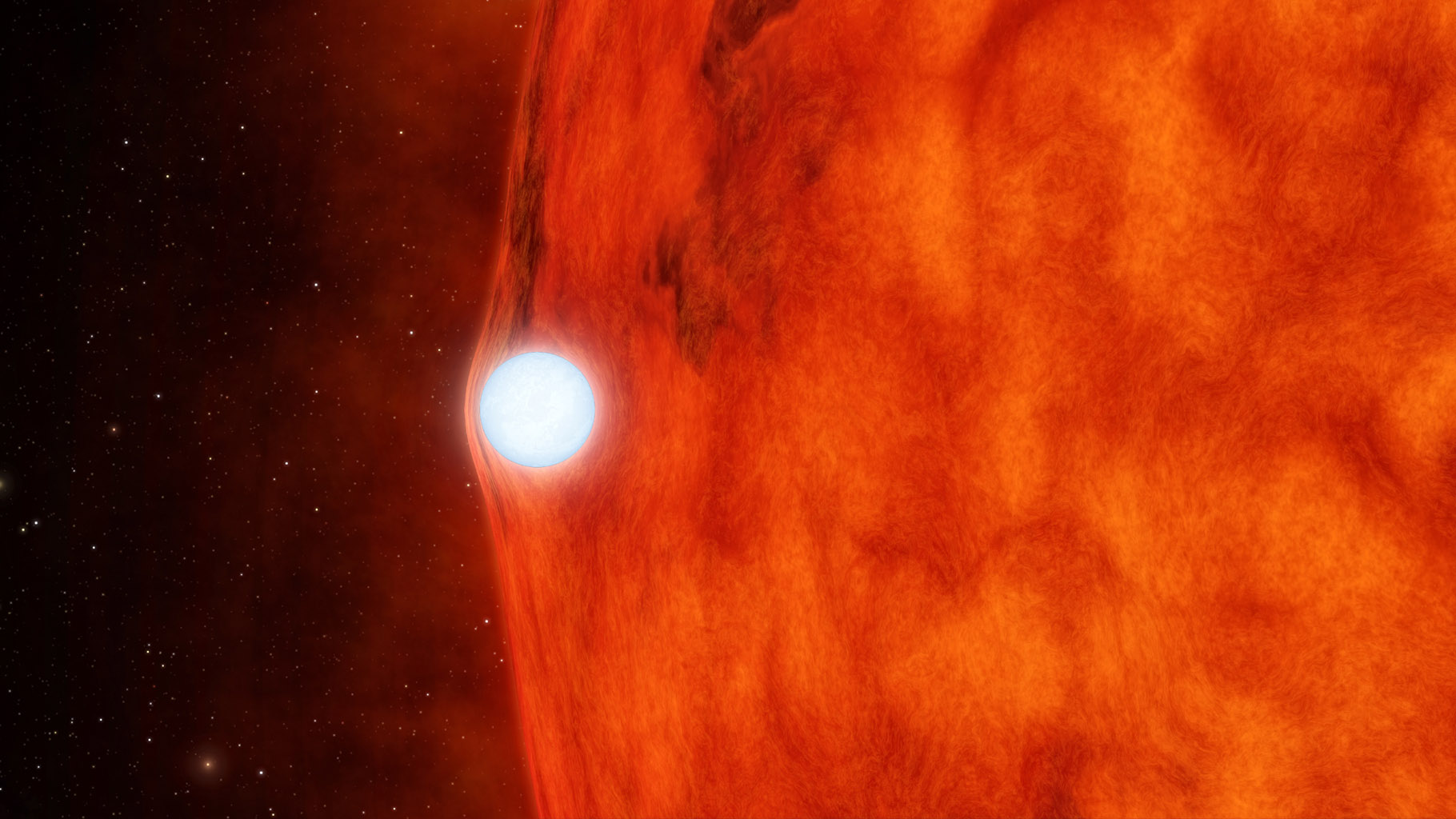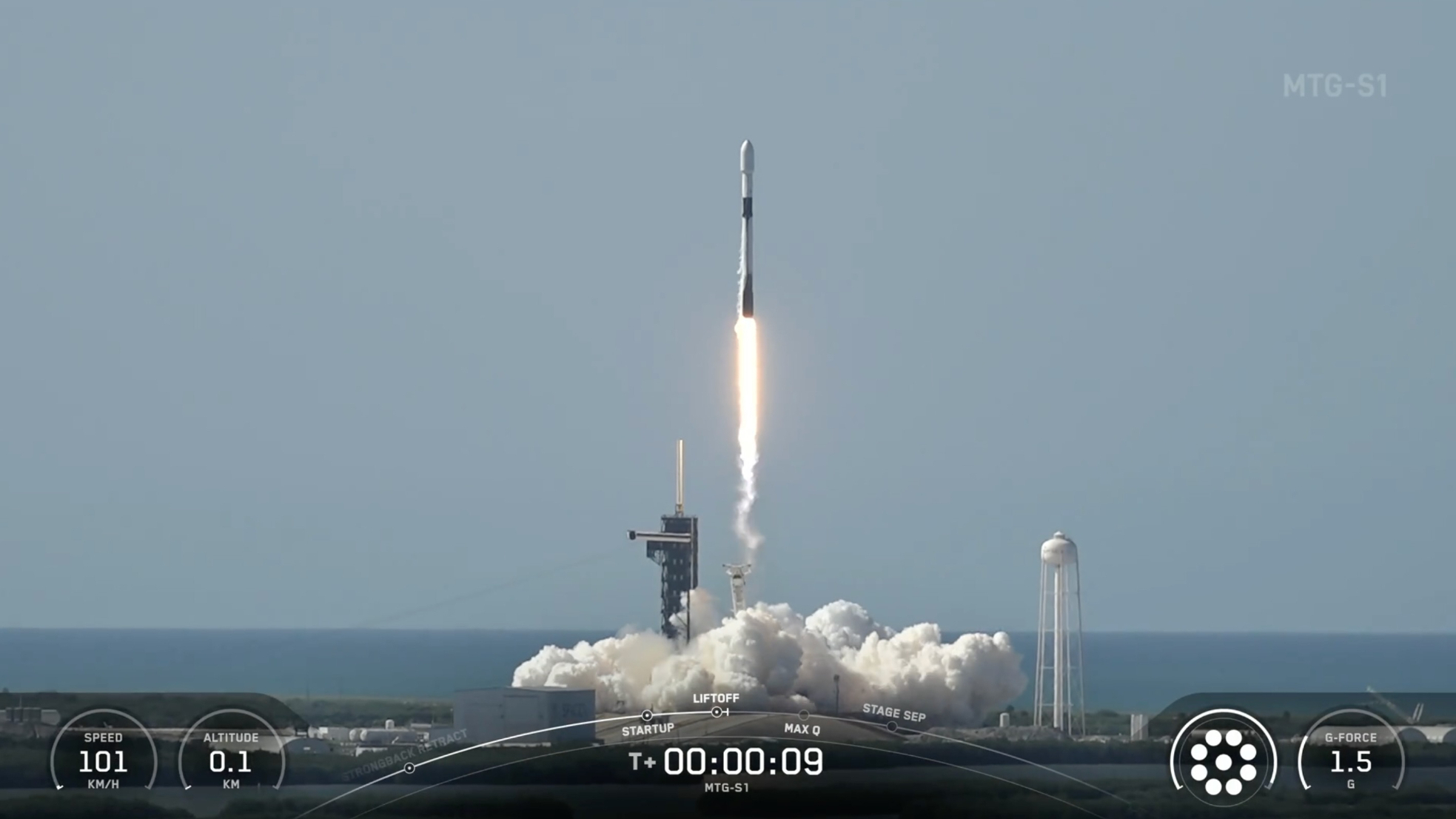What Makes This Low-Mass White Dwarf So 'Impossible' to Behold?
The discovery of a new, 'impossible' white dwarf suggests they may be more common than once thought.

Scientists have spotted an incredibly weird, 'impossible' white dwarf star in a discovery that suggests these objects are even more common than suspected — or that something even stranger is happening.
White dwarfs are stellar cores left behind by stars like our sun. As these stars run out of fuel, they shed their outer layers and leave behind a core that cools over billions of years. The mass of the white dwarf is based on that of the original star, which in turn reflects its age.
Those relationships mean that researchers can use the mass of a white dwarf to calculate its age. And over the last decade, astronomers have discovered around 100 white dwarfs with masses so low they appear to be older than the 14.8-billion-year-old universe.
Related: How to Tell Star Types Apart (Infographic)
So far, astronomers have addressed that conundrum by noting that almost all of these objects occur with a companion star that could be siphoning off some of the white dwarf's mass, making it appear older than it actually is. But a very small handful of these extremely low-mass white dwarfs have no companions to blame for their change in mass, raising the question of how these objects can exist.
In new research, scientists describe finding an extremely low-mass white dwarf that does have a companion, but that star is distant enough that it shouldn't be able to steal the white dwarf's mass. Because the odds of spotting such a pair with the instrument scientists used are so low, the discovery could mean that 'impossible' white dwarfs are far more common than previously imagined.
"This finding suggests that there is something missing in our current understanding of low mass white dwarf formation and/or binary interactions," Kento Masuda, lead author on a new paper describing the research and an astronomer at Princeton University, told Space.com by email.
Breaking space news, the latest updates on rocket launches, skywatching events and more!
A white dwarf puzzle
Masuda and his colleagues used data gathered by NASA's famous planet-hunting instrument, the Kepler space telescope. Scientists have found thousands of planets and exoplanet candidates in the data Kepler gathered over its nine-year primary and extended mission. The instrument spots planets as rhythmic dips in a star's brightness. The dimming is caused by the planet slipping between the star and Kepler, called a transit.
But the space telescope has produced a wealth of astronomical discoveries, as well. Last year, Masuda and his colleagues noticed that the G-type star KIC 8145411 brightened regularly, an unusual reversal of transit situations. If a pair of orbiting stars lines up with Earth, their light will change as one star passes in front of the other. Usually, the light dims, because the total light from the system is reduced while one star disappears on the back side.
However, if one of the stars is compact enough, like a white dwarf, it can bend the light of its companion star when it passes in front, acting as a lens to magnify the surface of the less-dense star. This phenomenon, dubbed self-microlensing when it occurs in a binary, would lead to pulses of brightness.
Self-lensing systems have been predicted for some time, but scientists couldn't spot such a pair until Kepler could study thousands of star systems simultaneously over time. The first such system was discovered in 2014; since then, four more have been found, including KIC 8145411.
But the real surprise came when Masuda and his colleagues turned the Subaru telescope in Hawaii and the 1.5-meter telescope at the Fred Lawrence Whipple Observatory in Arizona on the newfound system.
Their follow-up observations revealed that the white dwarf was about one-fifth the mass of our sun, well within the class of extremely low-mass white dwarfs. But to the scientists' surprise, the companion star orbited too far from the white dwarf to have been able to filch its mass. Something else must be responsible for such a low apparent age for the white dwarf, the scientists concluded.
The big twist
It's possible, they added, that the white dwarf isn't a white dwarf after all. The scientists were only able to determine the object's mass and that it is relatively small; the team doesn't have a firm size estimate. That uncertainty means that the object lensing the star could actually be a denser black hole or neutron star that packs the same mass into less space. There are two arguments against a more exotic origin for the small object, however.
First, white dwarfs are far more common than either black holes or neutron stars, making them statistically more likely to be the mysterious companion. Perhaps more troublingly, astrophysicists don't have a good explanation for how such a low-mass neutron star or black hole might form, Masuda said, and they haven't spotted any tiny examples either, unlike extremely low-mass white dwarfs.
"I admit that this argument might not be totally convincing, given that we don't have a good explanation for how this white dwarf was formed anyway," he said.
If KIC 8145411 orbits with a white dwarf, it could prompt astronomers to take another look at what we think we know about how white dwarfs form and how they interact with companions.
"Single-star evolution cannot explain such an [extremely low-mass] white dwarf, so it's been assumed that interactions with a close binary play an important role," Masuda said. "But again, this binary interaction scenario fails to explain the observed orbit of the KIC 8145411 system, because the orbit is not so close as required for this scenario to work. So some parts of this story need to be modified — although we don't yet know which."
Masuda said he and his colleagues plan to continue the hunt for small white dwarfs in similar binaries to learn more about their properties.
"I hope they will help us to solve the puzzle presented by the KIC 8145411 system, and lead to [a] more complete understanding of white dwarfs in binaries," Masuda said.
The research is described in a paper published Aug. 5 in The Astrophysical Journal Letters.
- Einstein's Theory Helps ID First Exoplanets Outside Milky Way
- Gravitational Microlensing – How Planets are Found Using This Technique [VIDEO]
- The Sun Will Turn Into a Giant Crystal Ball After It Dies
Follow Nola on Facebook and on Twitter at @NolaTRedd. Follow us on Twitter @Spacedotcom and on Facebook.

Join our Space Forums to keep talking space on the latest missions, night sky and more! And if you have a news tip, correction or comment, let us know at: community@space.com.

Nola Taylor Tillman is a contributing writer for Space.com. She loves all things space and astronomy-related, and always wants to learn more. She has a Bachelor's degree in English and Astrophysics from Agnes Scott College and served as an intern at Sky & Telescope magazine. She loves to speak to groups on astronomy-related subjects. She lives with her husband in Atlanta, Georgia. Follow her on Bluesky at @astrowriter.social.bluesky
-
rod A very interesting report indicating more research is needed concerning white dwarfs and binary relationships (always good to find out more in stellar evolution theory). Perhaps some white dwarf calculated ages on the H-R diagram - may indeed be older than the Hubble time for the Big Bang :) Cosmology calculators show a younger universe age using H0 for an open universe compared to the flat age(s) models (sometimes 2 billion or more years younger than the common, 13.8 billion years old figure).Reply -
alantheastrophysicist I don't get it, why do they say it's age is older than the universe? - a 0.2 solar mass white dwarf has a progenitor star of about 2 solar masses which has a main sequence lifetime of about 1.5 billion years which is much lower than the age of the universe. But be that as it may in any case as far as how mass transfer can occur when the separation is as large as one a.u. - their separation could have originally been much closer and after mass transfer was accomplished the separation increased the same way the Earth-Moon distance is increasing...by angular momentum transfer due to tidal forces!Reply
